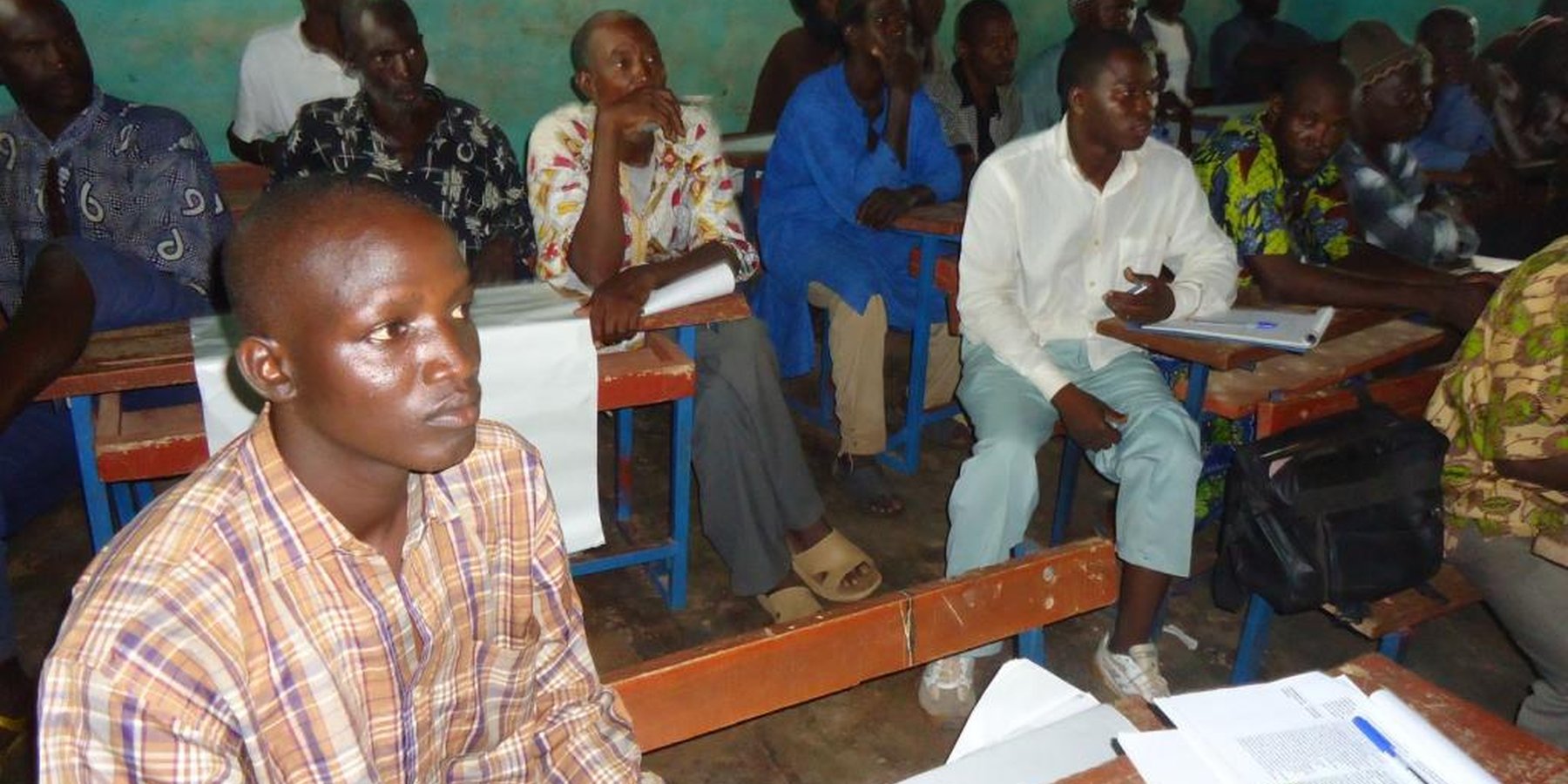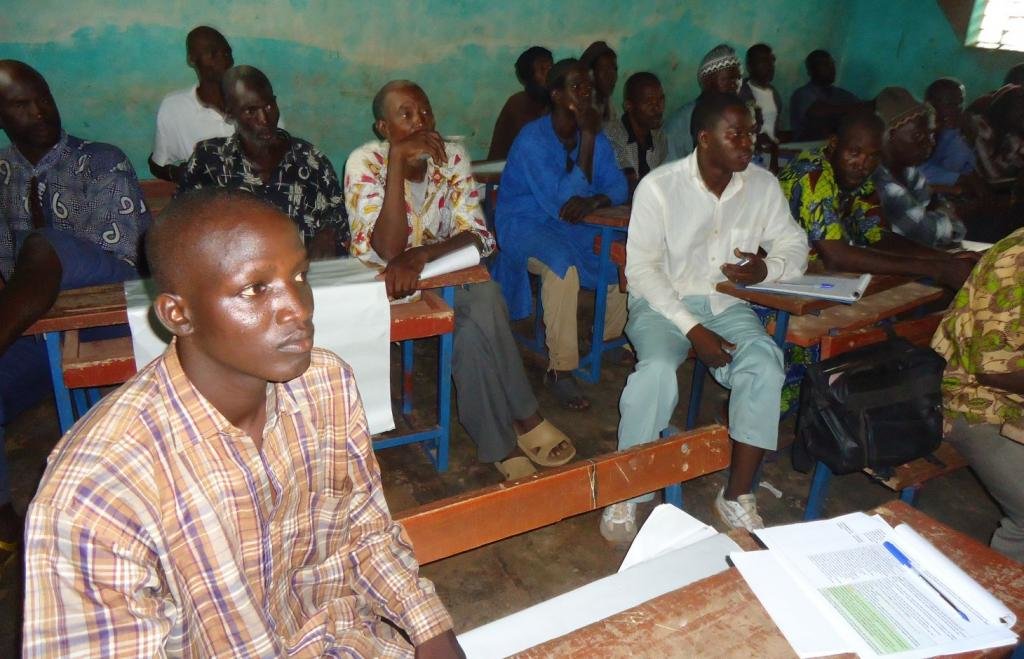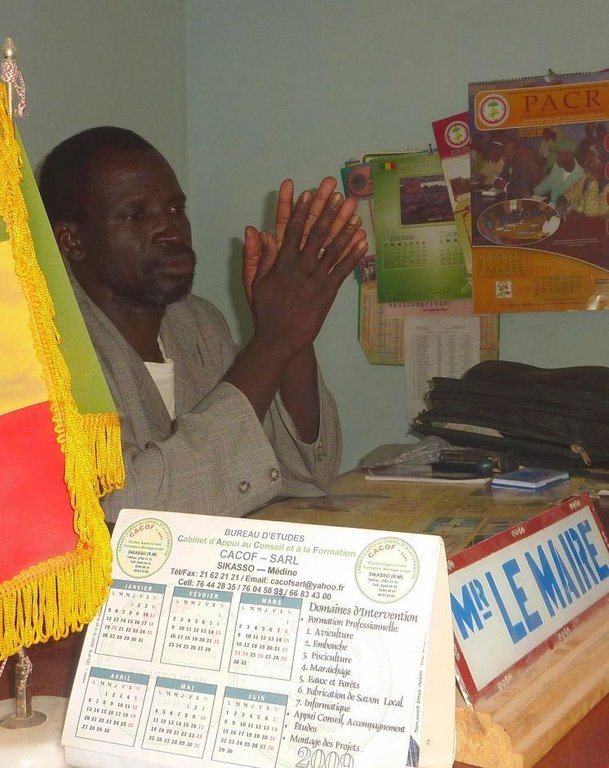Identifying and prioritizing scheme sites using a territorial, multi-stakeholder approach [Mali]
- Creation:
- Update:
- Compiler: Dieter Nill
- Editor: –
- Reviewer: Laura Ebneter
Identification et priorisation des sites d’aménagement dans une approche territoriale multi-acteurs (French)
approaches_2499 - Mali
View sections
Expand all Collapse all1. General information
1.2 Contact details of resource persons and institutions involved in the assessment and documentation of the Approach
SLM specialist:
Diallo Safiatou
safiatou.diallo@helvetas.org
Helvetas - Swiss Intercooperation
Mali
Name of the institution(s) which facilitated the documentation/ evaluation of the Approach (if relevant)
HELVETAS (Swiss Intercooperation)Name of the institution(s) which facilitated the documentation/ evaluation of the Approach (if relevant)
Deutsche Gesellschaft für Internationale Zusammenarbeit (GIZ) - Germany1.3 Conditions regarding the use of data documented through WOCAT
When were the data compiled (in the field)?
01/07/2012
The compiler and key resource person(s) accept the conditions regarding the use of data documented through WOCAT:
Yes
2. Description of the SLM Approach
2.1 Short description of the Approach
The desired objectives are to identify the priority actions for investment that have been agreed by local actors within the framework of the pastoral scheme, and to develop lowland areas.
2.2 Detailed description of the Approach
Detailed description of the Approach:
The approach aims (i) to ensure that all actors involved in developing lowland areas participate in the planning process and (ii) to prepare the ground for the self-management of the lowland scheme from the outset of the process. The goal is to gear the identification and prioritisation processes for schemes being carried out by local authorities (regional council, intermunicipal body, circle) towards the actual needs of local people.
This is achieved by preparing actors and organising multi-stakeholder meetings so that the visions of the different parties can be aligned in an inclusive way. This joint approach ensures investments are more relevant and well founded.
This practice was implemented in the four circles participating the AVAL programme: Kadiolo,
Sikasso, Yorosso and Koutiala. The practice led to the identification of around 10 priority investment sites in each of the four circles concerned. The sites are agricultural (dams, ponds) or pastoral (rangeland, cattle market, route marking). At the beginning of the process, the terms of reference (ToR) and data collection sheets are drawn up and presented to all the actors to ensure they are equally informed and to demonstrate the relevance of the approach across the regional council. The first workshop promotes a common understanding of the objectives and outcomes of the good practice.
Data on actual investment needs is collected by the commune (using data collection sheets) from actors in each village. An initial proposal for the identification and prioritisation criteria for scheme sites is put together by the regional council and its staff. The criteria are submitted for the approval of local actors in forums organised at the circle level with the support of the technical services. Following a first sift based on predefined criteria, the select committee judges the commitments and budgets of each and allocates scores for each criteria ranging from zero to five. Compulsory criteria (initial selection stage): 1)Absence of land ownership disputes, 2)Membership of PDESC, 3)Opening up the area – distance to a road or track that is accessible in all seasons, 4)The number of beneficiaries, 5)Farming of lowland areas–area of farmed land in relation to the possible farmable area. Optional criteria (second-stage sift for projects that have cleared the initial stage): 1)Diversification–number of products or farms, 2)Gender–number of women in relation to men, 3)Capacity of actors to contribute. On this basis, the actors from each circle identify the sites that offer the greatest potential from among the development projects undertaken by communes in the area in the context of their development programmes. Local authorities are then tasked with ensuring the supervision of the development process and the management of works and developed land. At the prioritisation workshop, each commune in the circle takes turn presenting and making the case for its completed data sheet to the plenary.
The regional council initiates the process, defines the identification and prioritisation criteria, undertakes the regional consolidation of projects for delivery at the local level and acts as mediator between communities.
The circle councils organise the information and consultation workshops and the decision-making/prioritisation workshop, and they set up the moderation team with the support of technical services.
Communes pre-select projects at the commune level, assessing them in terms of their relevance to PDESC and the criteria put forward; they ensure data collection sheets are completed in collaboration with beneficiaries, and they take part in the prioritisation process by making the case for their projects.
The support structure (AVAL) provides training and advisory support to actors.
Technical services provide technical support and make sure activities are coherent and in line with national programmes. Consultants facilitate the process and train the actors.
2.3 Photos of the Approach
2.5 Country/ region/ locations where the Approach has been applied
Country:
Mali
Region/ State/ Province:
Mali
Further specification of location:
Kadiolo, Sikasso, Yorosso, Koutiala
2.6 Dates of initiation and termination of the Approach
Indicate year of initiation:
2009
2.7 Type of Approach
- project/ programme based
2.8 Main aims/ objectives of the Approach
The Approach focused mainly on SLM with other activities
The approach aims (i) to ensure that all actors involved in developing lowland areas participate in the planning process and (ii) to prepare the ground for the self-management of the lowland scheme from the outset of the process. The goal is to gear the identification and prioritisation processes for schemes being carried out by local authorities (regional council, intermunicipal body, circle) towards the actual needs of local people.
The SLM Approach addressed the following problems: lack of involvement of stakeholders in developing lowland areas
2.9 Conditions enabling or hindering implementation of the Technology/ Technologies applied under the Approach
institutional setting
- hindering
lack of involvement of stakeholders in developing lowland areas
Treatment through the SLM Approach: all actors involved in developing lowland areas participate in the planning process
3. Participation and roles of stakeholders involved
3.1 Stakeholders involved in the Approach and their roles
- local land users/ local communities
- SLM specialists/ agricultural advisers
- NGO
HELVETAS - Swiss Intercooperation
- national government (planners, decision-makers)
3.2 Involvement of local land users/ local communities in the different phases of the Approach
| Involvement of local land users/ local communities | Specify who was involved and describe activities | |
|---|---|---|
| initiation/ motivation | passive | |
| planning | interactive | |
| implementation | interactive | |
| monitoring/ evaluation | passive | |
| Research | passive |
3.4 Decision-making on the selection of SLM Technology/ Technologies
Specify who decided on the selection of the Technology/ Technologies to be implemented:
- mainly SLM specialists, following consultation with land users
Explain:
Decisions on the method of implementing the SLM Technology were made by mainly by SLM specialists with consultation of land users
4. Technical support, capacity building, and knowledge management
4.1 Capacity building/ training
Was training provided to land users/ other stakeholders?
Yes
Specify who was trained:
- land users
Form of training:
- public meetings
4.2 Advisory service
Do land users have access to an advisory service?
Yes
Specify whether advisory service is provided:
- at permanent centres
Describe/ comments:
Advisory service is quite adequate to ensure the continuation of land conservation activities; The planning capacity of local authorities is strengthened, and this expertise in the planning process can be applied to other sectors
4.3 Institution strengthening (organizational development)
Have institutions been established or strengthened through the Approach?
- yes, greatly
Specify the level(s) at which institutions have been strengthened or established:
- local
Specify type of support:
- capacity building/ training
4.4 Monitoring and evaluation
Is monitoring and evaluation part of the Approach?
Yes
Comments:
socio-cultural aspects were ad hoc monitored by project staff through observations;
economic / production aspects were ad hoc monitored by project staff through observations
management of Approach aspects were ad hoc monitored by project staff through observations
There were no changes in the Approach as a result of monitoring and evaluation
There were no changes in the Technology as a result of monitoring and evaluation
4.5 Research
Was research part of the Approach?
Yes
Specify topics:
- sociology
- economics / marketing
- technology
5. Financing and external material support
5.1 Annual budget for the SLM component of the Approach
If precise annual budget is not known, indicate range:
- 2,000-10,000
Comments (e.g. main sources of funding/ major donors):
Approach costs were met by the following donors: international non-government: 100.0%
5.2 Financial/ material support provided to land users
Did land users receive financial/ material support for implementing the Technology/ Technologies?
No
5.3 Subsidies for specific inputs (including labour)
- none
If labour by land users was a substantial input, was it:
- voluntary
5.4 Credit
Was credit provided under the Approach for SLM activities?
No
6. Impact analysis and concluding statements
6.1 Impacts of the Approach
Did the Approach help land users to implement and maintain SLM Technologies?
- No
- Yes, little
- Yes, moderately
- Yes, greatly
The planning capacity of local authorities is strengthened, and this expertise in the planning process can be applied to other sectors. Strong levels of community engagement are seen to arise. Investment decisions and funding awards are not carried out in secret deliberations or project offices. The links between the different levels in local authorities are reinforced and a shared development vision is jointly owned by all actors.
Did the Approach empower socially and economically disadvantaged groups?
- No
- Yes, little
- Yes, moderately
- Yes, greatly
Did other land users / projects adopt the Approach?
- No
- Yes, little
- Yes, moderately
- Yes, greatly
This practice was implemented in the four circles participating the AVAL programme: Kadiolo, Sikasso, Yorosso and Koutiala. The practice led to the identification of around 10 priority investment sites in each of the four circles concerned. The sites are agricultural (dams, ponds) or pastoral (rangeland, cattle market, route marking).
Did the Approach lead to improved livelihoods / human well-being?
- No
- Yes, little
- Yes, moderately
- Yes, greatly
Did the Approach help to alleviate poverty?
- No
- Yes, little
- Yes, moderately
- Yes, greatly
6.2 Main motivation of land users to implement SLM
- increased production
- increased profit(ability), improved cost-benefit-ratio
- improvement of well-being and livelihoods
6.3 Sustainability of Approach activities
Can the land users sustain what has been implemented through the Approach (without external support)?
- yes
6.4 Strengths/ advantages of the Approach
| Strengths/ advantages/ opportunities in the compiler’s or other key resource person’s view |
|---|
| The links between the different levels in local authorities are reinforced and a shared development vision is jointly owned by all actors. Each actor comes to understand their importance as part of the implementation of the investment programme. Moreover, strong levels of community engagement are seen to arise. Investment decisions and funding awards are not carried out in secret deliberations or project offices. |
| The moderate costs also help towards making this practice sustainable. |
|
The planning capacity of local authorities is strengthened, and this expertise in the planning process can be applied to other sectors. The inclusive approach and the local availability of facilitation skills are factors that make the practice sustainable. When outcomes are accepted by all actors, the uptake and sustainability of the practice become more likely. (How to sustain/ enhance this strength: It is essential to prepare thoroughly before beginning work: criteria must be clear and relevant; communes must describe and document their scheme propositions and back them up with appropriate arguments; and moderation teams must be objective. Ensuring actors are informed is a major factor for success: all parties have the right to timely information. Elected representatives must have a good understanding of their roles within the context of decentralisation and rural sector development; communities must be closely involved in the process. Inclusive participation requires the involvement of actors across the board. ) |
6.5 Weaknesses/ disadvantages of the Approach and ways of overcoming them
| Weaknesses/ disadvantages/ risks in the compiler’s or other key resource person’s view | How can they be overcome? |
|---|---|
| A major constraint in delivering this practice is the requirement that territorial communities contribute their own funds, as this forms part of the selection criteria |
7. References and links
7.1 Methods/ sources of information
- field visits, field surveys
- interviews with land users
7.2 References to available publications
Title, author, year, ISBN:
Manual of Good Practices in Small Scale Irrigation in the Sahel. Experiences from Mali. Published by GIZ in 2014.
Available from where? Costs?
http://star-www.giz.de/starweb/giz/pub/servlet.starweb
Title, author, year, ISBN:
HELVETAS Swiss Intercooperation (2009), Rapport du forum de priorisation des investissements hydro-agricoles et pastoraux. [Report of the hydro-agricultural and pastoral investment prioritisation forum]
Title, author, year, ISBN:
HELVETAS Swiss Intercooperation (2010), Convention du partenariat local des cercles de Kadiolo, Sikasso, Koutiala, Yorosso. [Local partnership agreement between the Kadiolo, Sikasso, Koutiala and Yorosso circles]
Links and modules
Expand all Collapse allLinks
No links
Modules
No modules




